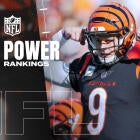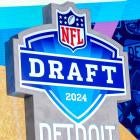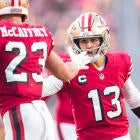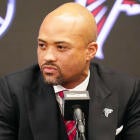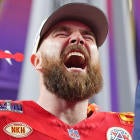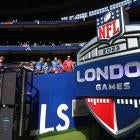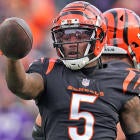Back in May the NFL writers and editors at CBSSports.com gathered together to discuss the key figures and moments of every NFL franchise in the Super Bowl era. Before long we were discussing every team's best and worst moments, along with their most-hated players and coaches, as well as some of the more bizarre things each team has been involved in. That spirited discussion produced this series -- the Good, Bad, Ugly and, sometimes, Bizarre moments for every team. We continue with the San Diego Chargers.
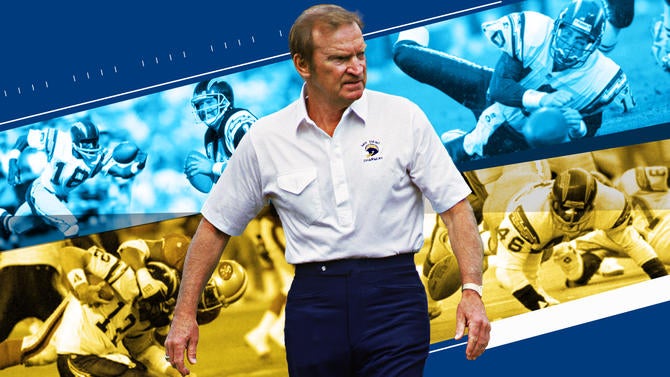
The Good
Air Coryell
Every true NFL innovator is ahead of their time, and Don Coryell was no exception. The former Chargers coach changed the way the game is played by taking one side of the ball to new vertical heights with his signature "Air Coryell" offense that became of a staple of his teams in San Diego.
Former Redskins coach Joe Gibbs worked for Coryell and recalled how initially he was a power-running coach before deciding, while at San Diego State University, it was time to take to the sky with the football.
"Don is the father of the modern passing game," Gibbs said when Coryell died in 2010. "He was extremely creative and fostered things that are still in today's game because he was so creative. You look around the NFL now and many teams are still running a version of the Coryell offense."
Coryell's decision to switch from a power-running game to a high-powered passing attack was born, like many different NFL innovations, out of necessity while coaching at San Diego State University.
"We could only recruit a limited number of runners and linemen against schools like USC and UCLA. And there were a lot of kids in Southern California passing and catching the ball," Coryell said. "There seemed to be a deeper supply of quarterbacks and receivers. And the passing game was also open to some new ideas."
Coryell carried the decision to the NFL, where he first coached the St. Louis Cardinals (1973-77) before returning to San Diego to take over the Chargers.
"I just decided, hell, you can't just go out and run the ball against better teams," Coryell said. "You've got to mix it up. You've got to throw the damn ball if you're going to beat better teams."
Line up the career of Dan Fouts -- Hall of Fame quarterback -- and Coryell's tenure in San Diego and you see a system tailor-made for a tough-as-nails quarterback with a big arm.
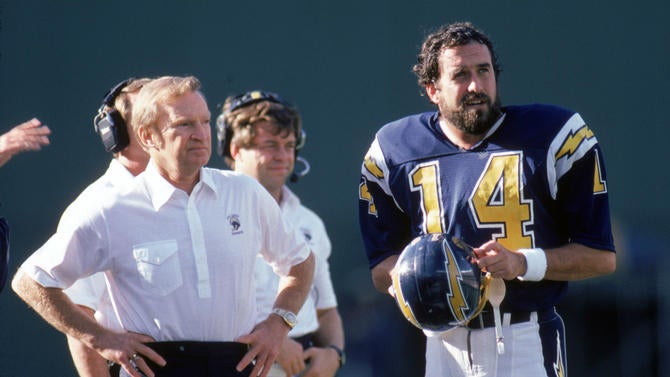
Before Coryell showed up, Fouts averaged 1,532 yards, 7 touchdowns, 11 interceptions and 7.0 yards per attempt per season from 1973-77. Under Coryell, Fouts blossomed into a Hall of Fame quarterback, averaging 3,652 yards, 23 touchdowns, 19 interceptions and 7.9 yards per attempt from 1978 through 1986.
Fouts led the NFL in passing yards for four consecutive seasons from 1979 through 1982, including a ridiculous 4,715 number in 1980 (Brian Sipe was next closest with 4,132).
The offensive attack was predicated on the deep strike, Fouts would note later.
"The first thing in our offense was always the bomb," Fouts said. "It was built into almost every pass play, where the quarterback initially looks for that chance to hit the big one. And I think if you start with that premise and then work your way back toward the line of scrimmage, that's the Air Coryell offense."
Today the NFL is littered with 4,000-yard passers year in and year out. People passed plenty back in Coryell's day, but the modifications he made to the modern passing game spurred a revolution that has made football more and more popular through innovative offensive techniques and high-flying passing attacks.
And though Coryell would never win a Super Bowl, multiple members of his coaching tree -- John Madden, Joe Gibbs, Norv Turner and Mike Martz to name a few -- would go on to great success in the NFL.
Coryell's résumé also lacks a Pro Football Hall of Fame nod, borderline inexplicable for someone who changed the game the way he did.
The Bad
Ryan Leaf
There is a long history of juxtaposition at the top of draft classes as it relates to quarterbacks. Whether it's actually a 1-2 thing, there is consistent comparison between players drafted high. The most distinct of these comparisons? Peyton Manning and Ryan Leaf.
The 1998 NFL Draft featured two players in Manning and Leaf who were going right at the top. It was just a matter of who the Colts took at No. 1.
The debate was the quintessential quarterback comparison too. There was Manning, the four-year starter for Tennessee, a mature young man with a family pedigree and an incredibly high floor. Manning eschewed leaving college early to stick around for his senior season with the Vols, only to fall short of a national title and the Heisman (thanks, Charles Woodson).
And there was the intrigue of Leaf, the strong, athletic quarterback who burst on the scene for Washington State with a mammoth junior season.
From Mike Chappelle of the Indianapolis Star in 2012 (ahead of the Andrew Luck/Robert Griffin III decision):
In the days, weeks and months leading up to the 1998 draft, the debate raged on the national stage and in the private recesses of the Colts' West 56th Street complex. At its essence, the discussion bounced from Manning, the polished prospect seen as more NFL-ready and, at worst, the "safe" pick, to Leaf, the quarterback with the bigger arm and bigger upside.
Ultimately the Colts decided on Manning -- and perhaps it wasn't as close as we remember now. A Peter King article in Sports Illustrated polling six different football men ("a blue-ribbon panel" if you will) had a unanimous conclusion that Manning was indeed the choice.
But Bill Polian, then president of the Colts, recalls it being 50-50 in terms of the early voting and the scouting department leaning towards Leaf over Manning.
"It was just too important a decision not to do everything possible to make sure you were 100 percent comfortable with the choice," Polian said in 2012. "We were not going to leave any stone unturned.
"We probably turned over too many rocks and chased too many ghosts."
In the end the Colts took Manning and the Chargers, after giving up multiple picks as well as Eric Metcalf, flipped from No. 3 to No. 2 overall with the Cardinals and selected Leaf.
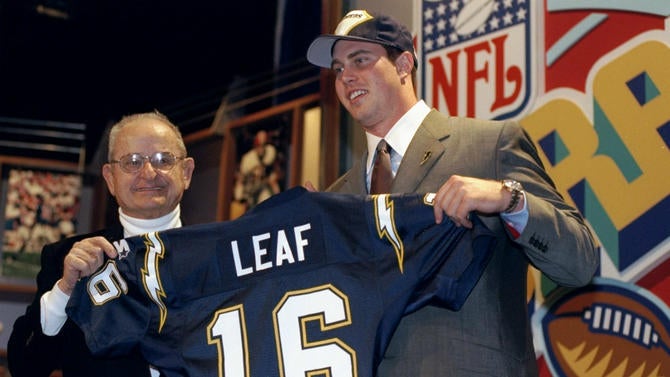
"I'm looking forward to a 15-year career, a couple of trips to the Super Bowl and a parade through downtown San Diego," Leaf said when he was drafted.
He would last three seasons in San Diego, including one missed entirely by injury, before being released after the 2000 season.
Here's a rare Leaf highlight from his Chargers days, including one of his just 14 touchdowns:
Perhaps the most stunning stat of all: Leaf had more passing yards in his senior season at Washington State (3,968) than he had during his entire NFL career combined (3,666).
Leaf would later deal with major off-field issues, going to prison for two years after a 2012 arrest for burglary and drug charges. Leaf pled guilty to multiple charges, was kicked out of treatment and eventually served two years in prison before being released.
The former bust of a quarterback eventually returned to the news cycle thanks to Johnny Manziel, former Browns quarterback who is still battling off-field issues. Leaf said seeing Manziel was like "like a mirror."
The Ugly
The Super Bowl curse
The tragically bizarre case of the 1994 San Diego Chargers is difficult to fathom. Yes, professional football players who played during an era when the game was a touch rougher are probably going to face a shortened lifespan. But the rate and volume at which these players passed away was alarming.
The '94 team, coached by Bobby Ross, went 11-5, won the AFC West and beat the Dolphins and Steelers en route to a Super Bowl matchup against a dominant 49ers team. They were heavy underdogs but the result was worse than Vegas could predict: Steve Young set a Super Bowl record with six touchdown passes and San Francisco routed the Bolts 49-26.
When Junior Seau killed himself in May of 2012, he became the eighth member of that team to die in less than 20 years after the Super Bowl.
And the way the players died was bizarre as well.
Linebacker Lew Bush died of a heart attack at the age of 42 in 2011.
Defensive lineman Shawn Lee died of cardiac arrest brought on by double pneumonia at the age of 44 in 2011.
"It's crazy, just crazy, that we've had so many guys who have fallen. I can't make any sense of it," former running back Natrone Means said after Lewis died. "I've given up trying. You just hope you quit getting these random messages out of nowhere that another teammate has passed away."
Chris Mimms was found facedown in a bathroom floor after he died of an enlarged heart in 2008.
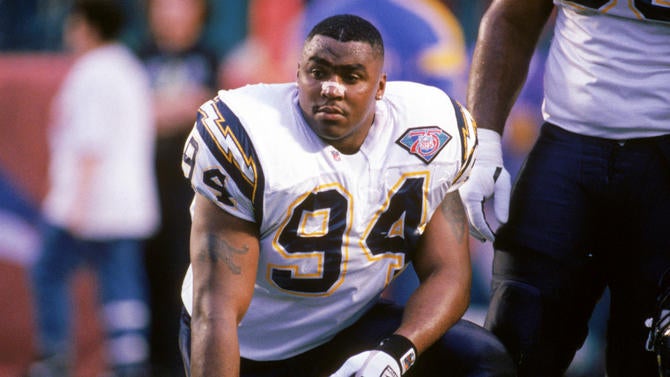
Center Curtis Whitley was found face down in the bathroom of his trailer in 2008 as well.
"I couldn't imagine one team having five guys from one calendar season just die unless it's a team crash or something," former tight end Deems May said in 2008. "I bet you couldn't find a small business with 53 people and have five people die."
Doug Miller was struck by lightning in 1998.
Running back Rodney Culver died in a plane accident in 1996.
Linebacker David Griggs died at the age of 28 when his car slid off a highway after his blood alcohol was twice the legal limit.
In 2008, an actuarial and biostatistics scientist told the Washington Post the odds of five of the Chargers dying within 14 years was less than 1 percent. Football is a dangerous game, but it should not be this dangerous.
The Bizarre
Freezer Bowl
Remember the high-flying Chargers offense from earlier? How do you think that squad fared when it was forced to play in the coldest-temperature game in NFL history? You're right! They were not good.
The Bengals and Chargers squared off in the 1981 AFC Championship Game, also known as the "Freezer Bowl," on January 10, 1982.
Let's go back back back in time:
The Freezer Bowl was not actually technically the coldest game in NFL history -- the Packers-Cowboys "Ice Bowl" of 1967 had the coldest air temperature in NFL history.
But the Freezer Bowl beat any other game in terms of wind chill -- while it was "only" negative-9 degrees outside, the wind chill of 35 mph factored in made it negative-59 degrees.
It was so cold Fouts recalled to TheMMQB.com that to this day his hands and feet hurt whenever it gets cold because of the game:
"Nothing you can do about it," [Fouts] said on the phone. "It's history. You just had to play in the game, and you had no idea this would come of it. The biggest problem, really, was there were no gloves for quarterbacks in those days. Kenny Anderson and I didn't have the luxury that day that the guys today have."
Fouts walked off the field with literal icicles hanging off his beard.
Hall of Fame tight end Kellen Winslow said the next day he "wouldn't send my dog out in that type of weather."
San Diego punter Greg Roberts described punting the football as "like kicking bricks."
Multiple people watching the game in the stands suffered heart attacks. And yet multiple Bengals fans were hanging out in the stands without shirts on, as the Cincinnati Enquirer would recently capture in photo form.
The Bengals actually kicked off in both halves during the game. They won the toss to start the game and kicked to have the wind at their back. The Chargers took the ball in the second half but also went into the wind for the third quarter. Cincinnati, who would win 27-7, made the Super Bowl for the first time and won only their second AFC Championship.
San Diego remains without a title.
* * *
More Good, Bad, Ugly and the Bizarre
Where's your favorite NFL team? Check the schedule below
AFC East
- June 13: New England Patriots
- 14: Miami Dolphins
- 15: New York Jets
- 16: Buffalo Bills
NFC East
- June 17: Dallas Cowboys
- 20: New York Giants
- 21: Philadelphia Eagles
- 22: Washington Redskins
AFC West
- June 23: Denver Broncos
- 24: Oakland Raiders
- 27: Kansas City Chiefs
- 28: San Diego Chargers
NFC North
- June 29: Chicago Bears
- 30: Detroit Lions
- July 1: Green Bay Packers
- 4: Minnesota Vikings
AFC South
- July 5: Houston Texans
- 6: Tennessee Titans
- 7: Jacksonville Jaguars
- 8: Indianapolis Colts
NFC South
- July 11: Carolina Panthers
- 12: Tampa Bay Buccaneers
- 13: Atlanta Falcons
- 14: New Orleans Saints
AFC North
- July 15: Pittsburgh Steelers
- 18: Baltimore Ravens
- 19: Cincinnati Bengals
- 20: Cleveland Browns
NFC West
- July 21: Arizona Cardinals
- 22: Los Angeles Rams
- 25: Seattle Seahawks
- 26: San Francisco 49ers














